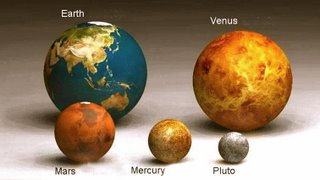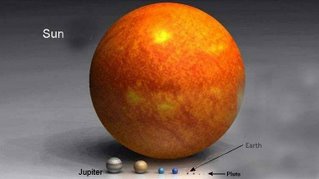_____________________________
Did you know that:
What does this have to do with trading, you say? A lot.
Did you wake up today and realize that you were millions of miles away from where you were yesterday? Probably not. If you are like me, you probably woke up in the same house that you always do, looked out and saw the same neighborhood that you always see, and spent your day in the same community that you always do. You probably did not pull out your telescope and calculator, make a few notations, and notice how far you travelled. As far as you can tell, you are in the same spot today that you were in yesterday, but that is not really true. You are literally millions of miles away from yesterday.
In the same way that most of us are not aware of our movement through the universe, we are also not aware of the grand moves of the marketplace. We wake up each day and see that soybeans are up 3 cents or down 8 cents and, as far as we can tell, not much has changed. We get accustomed to seeing certain prices and come to believe that $5 per bushel is "low" and $7 per bushel is "high." Without a calculator and a long-term map, we do not understand the importance of the changes that are happening right in front of us. All we notice is now and all we can compare to is what we remember - which is not very much. Eventually, the day of reckoning comes. Soybeans trade at $5.10 and since we have learned that $5.10 is "low," we buy. When soybeans fall to $4.90, we may even buy some more. At $4.40, we complain that the market is crazy and look for villains to blame. At $4.10, we shake our heads in disbelief and wonder what happened to the world that we knew. At $3.90, we cough up our position, vowing to never trade again.
This tragedy, although fictional, has happened far too often and in too many markets, but it does not have to. One little change in how we look at the world can make a huge difference - literally the difference between winning and losing. All it takes is a calculator, a little research, and a bit of humility. As I see it, life on this tiny, fragile planet is an absolute miracle - far beyond our comprehension. In our day to day living, however, we do not sense the miracle. We fall too easily into the trap of believing that events are somehow stable and predictable. We laugh at our ancestors for believing that the sun revolved around the earth, but our own perspective is not much different. We see the sun rise and set everyday and assume that things are basically the same, unaware that the entire universe is a roaring speedway. Occasionally, we may look back a decade or so and get a sense of the changes around us, but in our daily moments we are mostly numb to it all. For whatever reason, we are not very good at noticing the big picture.
In this numbed state, life is full of surprises. One minute (in 1998), the world is awash in crude oil and the experts say that it will be at least five years before the surplus disappears. The next minute (in 1999 and 2000), crude prices are climbing higher and farther than anyone ever expected. The experts told us not to worry, reminding us that what goes up must come down. Now (in 2004), the world is producing all the oil it can and it still may not be enough. China? Osama bin Laden? Yukos? They were not even on the radar screen of most analysts in 1998. It has only been six years and already the world is drastically different. Did you notice? The market made a quantum leap from 1998 to 2004 and left most of us - including the experts - in the dust. I do not know anyone who could have predicted the past six years, but I do know a trading approach that could have given us a chance to profit from the change.
Why has the Dailyfutures Report been so profitable? I believe that it is because the Report's trading method is designed to identify and follow major market moves - the very ones that we ignore in our daily lives. The old school of investing tries to buy low and sell high. Just as old world astronomers believed that the sun revolved around a stable earth, old world investors believe that prices fluctuate around stable values. Unfortunately, they ignore how rapidly those 'stable values' change over time. After trading with the Dailyfutures Report for over two and a half years, I can tell you that it is not easy to buy high and sell low - it is hard to get rid of those old world beliefs. But I believe that it works because it agrees with the way things really are - dynamic, fluid, constantly changing. All events and indeed, the entire universe is headed somewhere that our little minds cannot foresee. I cannot predict where the markets are going, but I can certainly come along for the ride... and hopefully make a buck along the way.
Best wishes,
Dailyfutures.com. November 3, 2004.
Copyright Daily Futures Inc. 2004 All Rights Reserved.
Did You Know?




